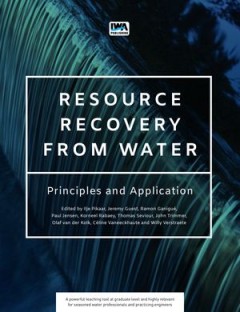Filter by

Storyplaying: Agency and Narrative in Video Games
Incontestably, Future Narratives are most conspicuous in video games: they combine narrative with the major element of all games: agency. The persons who perceive these narratives are not simply readers or spectators but active agents with a range of choices at their disposal that will influence the very narrative they are experiencing: they are players. The narratives thus created are realizat…
- Edition
- -
- ISBN/ISSN
- 9783110272451
- Collation
- -
- Series Title
- -
- Call Number
- -

Stanislaw Brzozowski and the Migration of Ideas
As a writer, critic, and philosopher, StanisÊaw Brzozowski (1878–1911) left a lasting imprint on Polish culture. He absorbed virtually all topical intellectual trends of his time, adapting them for the needs of what he saw as his primary mission: the modernization of Polish culture. The essays of the volume reassess and contextualize Brzozowski's writings from a distinctly transnational vant…
- Edition
- -
- ISBN/ISSN
- 9783839446416
- Collation
- -
- Series Title
- -
- Call Number
- -

Shelley and Synesthesia
Glenn O’Malley’s Shelley and Synesthesia examines a little-known aspect of Percy Shelley’s poetry, offering a history of synesthesia and engaging in close readings of Shelley’s poetry, focusing primarily on his longer works. O’Malley explores the internal structure of Shelley’s poems to concentrate on patterns of imagery and symbolism, bringing attention to Shelley’s resourcefulne…
- Edition
- -
- ISBN/ISSN
- 9780810138636
- Collation
- -
- Series Title
- -
- Call Number
- -

Running and Clicking: Future Narratives in Film
Running and Clicking examines how Future Narratives push against the confines of their medium: Studying Future Narratives in movies, interactive films, and other electronic media that allow for nodes, this volume demonstrates how the dividing line between film and game is progressively dissolved. Focused on traditional mass media, transitional media, and new media, it also touches on transmedia…
- Edition
- -
- ISBN/ISSN
- 9783110272437
- Collation
- -
- Series Title
- -
- Call Number
- -

Routledge Handbook of African Literature
Routledge Handbook of African Literature
- Edition
- -
- ISBN/ISSN
- 9781351859387
- Collation
- -
- Series Title
- -
- Call Number
- -

Possessed: A Cultural History of Hoarding
In Possessed, Rebecca R. Falkoff asks how hoarding—once a paradigm of economic rationality—came to be defined as a mental illness. Hoarding is unique among the disorders included in the American Psychiatric Association's DSM-5, because its diagnosis requires the existence of a material entity: the hoard. Possessed therefore considers the hoard as an aesthetic object produced by clashing per…
- Edition
- -
- ISBN/ISSN
- 9781501752810
- Collation
- -
- Series Title
- -
- Call Number
- -

A Poetics of Plot for the Twenty-First Century: Theorizing Unruly Narratives
Story, in the largest sense of the term, is arguably the single most important aspect of narrative. But with the proliferation of antimimetic writing, traditional narrative theory has been inadequate for conceptualizing and theorizing a vast body of innovative narratives. In A Poetics of Plot for the Twenty-First Century: Theorizing Unruly Narratives, Brian Richardson proposes a new model for e…
- Edition
- -
- ISBN/ISSN
- 9780814214121
- Collation
- -
- Series Title
- -
- Call Number
- -

Playing The Text, Performing The Future: Future Narratives in Print and Digiture
This volume examines the structure of text-based Future Narratives in the widest sense, including choose-your-own-adventure books, forking-path novels, combinatorial literature, hypertexts, interactive fiction, and alternate reality games. How ´radical` can printed Future Narratives really be, given the constraints of their media? When exactly do they not only play with the mere idea of multip…
- Edition
- -
- ISBN/ISSN
- 9783110272390
- Collation
- -
- Series Title
- -
- Call Number
- -

How We Read
"What do we do when we read? Reading can be an act of consumption or an act of creation. Our “work reading” overlaps with our “pleasure reading,” and yet these two modes of reading engage with different parts of the self. It is sometimes passive, sometimes active, and can even be an embodied form. The contributors to this volume share their own histories of reading in order to reveal th…
- Edition
- -
- ISBN/ISSN
- 9781950192311
- Collation
- -
- Series Title
- -
- Call Number
- -

Future Narratives: Theory, Poetics, and Media-Historical Moment
This head volume of the ´Narrating Futures` series defines and identifies Future Narratives. It parses their characteristic features and aims at an abstract classification of the whole corpus, irrespective of its concrete manifestations across the media. Drawing on different theorems and approaches, it offers a unified theory and a poetics of Future Narratives. Locating the media-historical mo…
- Edition
- -
- ISBN/ISSN
- 9783110272376
- Collation
- -
- Series Title
- -
- Call Number
- -
 Computer Science, Information & General Works
Computer Science, Information & General Works  Philosophy & Psychology
Philosophy & Psychology  Religion
Religion  Social Sciences
Social Sciences  Language
Language  Pure Science
Pure Science  Applied Sciences
Applied Sciences  Art & Recreation
Art & Recreation  Literature
Literature  History & Geography
History & Geography